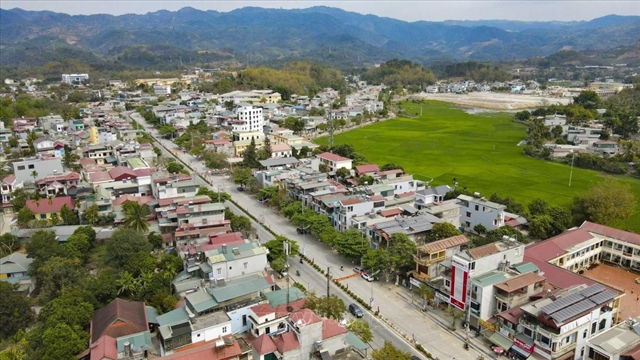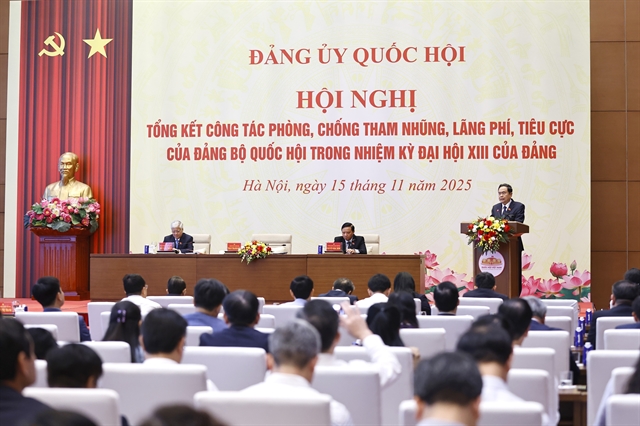 Economy
Economy

After posting a reduction last year, the Vietnamese merger and acquisition (M&A) market is expected to grow this year, fuelled by the adoption of new free trade agreements and the Government’s reforms to facilitate foreign investment. M&A expert Yee Chung Seck, partner of multinational law firm Baker & McKenzie, talks with Việt Nam News reporter Nguyễn Thu Hà about the outlook for the market in 2019.
 |
| Yee Chung Seck |
After posting a reduction last year, the Vietnamese merger and acquisition (M&A) market is expected to grow this year, fuelled by the adoption of new free trade agreements and the Government’s reforms to facilitate foreign investment. M&A expert Yee Chung Seck, partner of multinational law firm Baker & McKenzie, talks with Việt Nam News reporter Nguyễn Thu Hà about the outlook for the market in 2019.
Despite a decline across the market last year, M&A activities in the retail sector were positive. Will this trend continue in 2019?
We believe that this trend will continue in 2019.
While the overall volume of M&A deals was lower in 2018, the broader consumer goods and retail sector continues to be vibrant. Convenience stores and mini-marts in Việt Nam remain one of the fastest growing segments in the industry, and we expect to see continued investment in the retail sector.
The growing middle-class and higher disposal income and demand for quality goods and services, in particular, where seen to be beneficial to health and wellness, means that we also expect to see more investments to serve this market.
Finally, with reforms to further facilitate foreign investment underway, and with the ratification of the Comprehensive and Progressive Agreement for Trans-Pacific Partnership (CPTPP), the coming ratification of the EU-Việt Nam Free Trade Agreement (EVFTA) and other free trade agreements, inbound investments in particular are expected to accelerate through 2019-21.
What is the outlook of the whole local M&A market this year?
We expect the local M&A market to continue to grow. In 2018, Vingroup expanded greatly through a number of M&A deals, and it is likely that this will continue to be the case this year. Notably too, Trường Hải Auto Corporation (Thaco) acquired subsidiaries of HAGL Agrico, the agriculture arm of Hoàng Anh Gia Lai Group.
We also anticipate increased activities in technology and digital economy, including e-commerce and fintech, such as in leading local players like Tiki and MoMo.
More broadly, real estate investment will likely remain active this year. In particular, the rise of e-commerce has created the need to restructure supply chains, logistics, warehousing and delivery modes and we can expect investments and acquisitions to meet these needs.
Which sectors do you think will receive the most interest from foreign investors?
The sectors that stand out most right now are real estate, renewable energy, and technology.
The growth in real estate can be seen in almost any major metropolitan area in Việt Nam. In the drive from Cam Ranh airport to Nha Trang city centre, you can see many resorts and hotels being built, and some of these are foreign-invested developments. With the increase in tourism over the last few years, foreign investors are looking to develop more hotels and resorts all over Việt Nam.
Renewable energy is another area of interest. As Việt Nam’s population and economic activities continue to grow, energy consumption will grow along with it. Việt Nam’s interest in developing renewable energies is highlighted by its implementation of higher Feed-in-Tariffs. Specifically, the recent increase of new Feed-in-Tariffs (FIT) with the Decision No.39/2018/QĐ-TTg passed earlier in 2018, from US cents 7.8 per kWh to US cents 8.5 per kWh for onshore wind power projects and US cents 9.8 per kWh for offshore wind power projects has a positive impact on the industry.
With regards to fintech, the Vietnamese government has stated that it is considering a regulatory sandbox for fintech. If such a regulatory sandbox is well implemented in Việt Nam, it will boost the growth and development of fintech.
E-commerce is a growing area in Việt Nam, and Southeast Asia in general. Having recognised this, ASEAN countries recently finalised the ASEAN E-Commerce Agreement. The E-Commerce Agreement seeks to address cross-border issues that arise from e-commerce transactions by focusing on key areas such as cyber security, electronic signatures, cross-border transfer of data, protection of personal information and commitments to not require data residency. This E-commerce Agreement is an indication of the ASEAN countries’ commitment to establishing an environment conducive to the growth of e-commerce businesses.
Which factors will support the growth of the country’s M&A market this year?
The M&A market’s growth in Việt Nam is supported by several factors, the main factors being the ratification of FTAs, such as the CPTPP, continued adoption of Industry 4.0, increased confidence in the Vietnamese market, and the further reduction of regulatory red tape in certain areas, though this will require further work. Other areas that Việt Nam needs to keep working on are infrastructure and education.
Most of these factors have been discussed in part or in whole in other questions, so we will not repeat that there. With respect to Industry 4.0, on March 4th, Prime Minister Nguyễn Xuân Phúc met with representatives of other ministries to discuss the establishment of a National Innovation Centre in Hà Nội. This is a step forward in the adoption of Industry 4.0, which will make Việt Nam an even more competitive market.
What should the Vietnamese government do to attract more investment in the M&A market and make it grow?
One of the main challenges faced by investors is the lack of skilled labour force, especially within the digital economy sector. This raises concerns for foreign investors as they struggle to hire skilled labour in Việt Nam. According to the 2018 Global Talent Competitiveness Index, Việt Nam ranks 87th among 119 countries in terms of its ability to develop, and attract talents.
In order to address this concern, the Vietnamese government must prioritise making digital tools and services available for businesses and local employees. The government must also continue to work on providing high quality education and training to its labour force to bring it more in line with current industry demands. One of Việt Nam’s current advantages is its young and educated population. Việt Nam must focus on preparing this generation of workers to compete in these high-skilled sectors. — VNS




